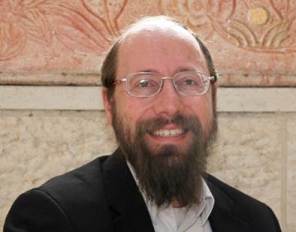Beit Midrash
- Torah Portion and Tanach
- D'varim
- Vayelech
These opening words from our Sedra are quite mysterious, because we never are told just where Moshe went to! The Torah could have easily started the parsha with the very next phrase, "And he spoke these words to Bnei Yisrael." What does the "Vayelech" add?
There are many thoughts by the rabbis on this. Some say that Moshe physically went from tent to tent – no small feat in a community of 2 million plus! - & said his final good-byes to his beloved nation. Others suggest that he went & took Yehoshua with him, in order to impress upon the people that his successor was now to be respected & obeyed.
Rav Moshe Feinstein (who, like Moshe Rabbeinu, was born on 7 Adar!) even writes that Moshe went to die, to fulfill Hashem’s command willingly, for if he had resisted G-d's order, he would not have died at all!
But there is another practical meaning to this phrase that I believe is most apropos for the impending day of Yom Kippur.
From the moment that Moshe is born, he is on the move, a man of perpetual action. His very name "Moshe," says the Sforno, does not actually mean, "he who is pulled out (of the water);" as the Torah says. That is far too passive
for Moshe. Instead the name literally means, "He who pulls others (out from danger)". And so he will. Indeed, Moshe is known for his steadfast activism: He saves a fellow Jew from being killed by an Egyptian; he defends the women at the well; he goes back & forth umpteen times (talk about "shuttle diplomacy!") to try & convince Paro to let the Israelites go. He splits seas, he fights wars, he literally climbs the mountain – twice – in his tireless task to take a nation from slavery to salvation.
The lesson for us should be abundantly clear: We can never, ever stop moving, for any organism that ceases to move or to grow invariably shrivels & dies. Even an inanimate object must be in flux; if you don’t drive a car for years, it turns into a rusty hunk of junk; a long-neglected pen won’t write – even with a full supply of ink.
So, too, our Neshamot – like our muscles – must be continually exercised if they are to avoid atrophy. Standing in one place for too long, we slowly drift backwards, rather than upwards. We have to move! And that is precisely why the
act of atonement – in truth, a movement back to Hashem – is called Teshuva, to turn, or re-turn. Keep moving, but turn in the right direction, always towards the Almighty.
On many of our busy streets, there are traffic signs indicating that a U-turn is prohibited there. But when it comes to seeking forgiveness, it helps to remember that Hashem not only allows, but encourages YOU-turns!

Veheshiv and Veshav
Parashat Nitzavim - Vayelekh
Rabbi Sender Shizgal | 5764

Yehoshua “Writes” a New Chapter in History
Parashat Vayelech
Rabbi Yossef Carmel | 5 Tishrei 5766
G-d Gives Tests – and Provides the Answers
Rabbi Moshe Leib Halberstadt | 22 Elul 5783



















